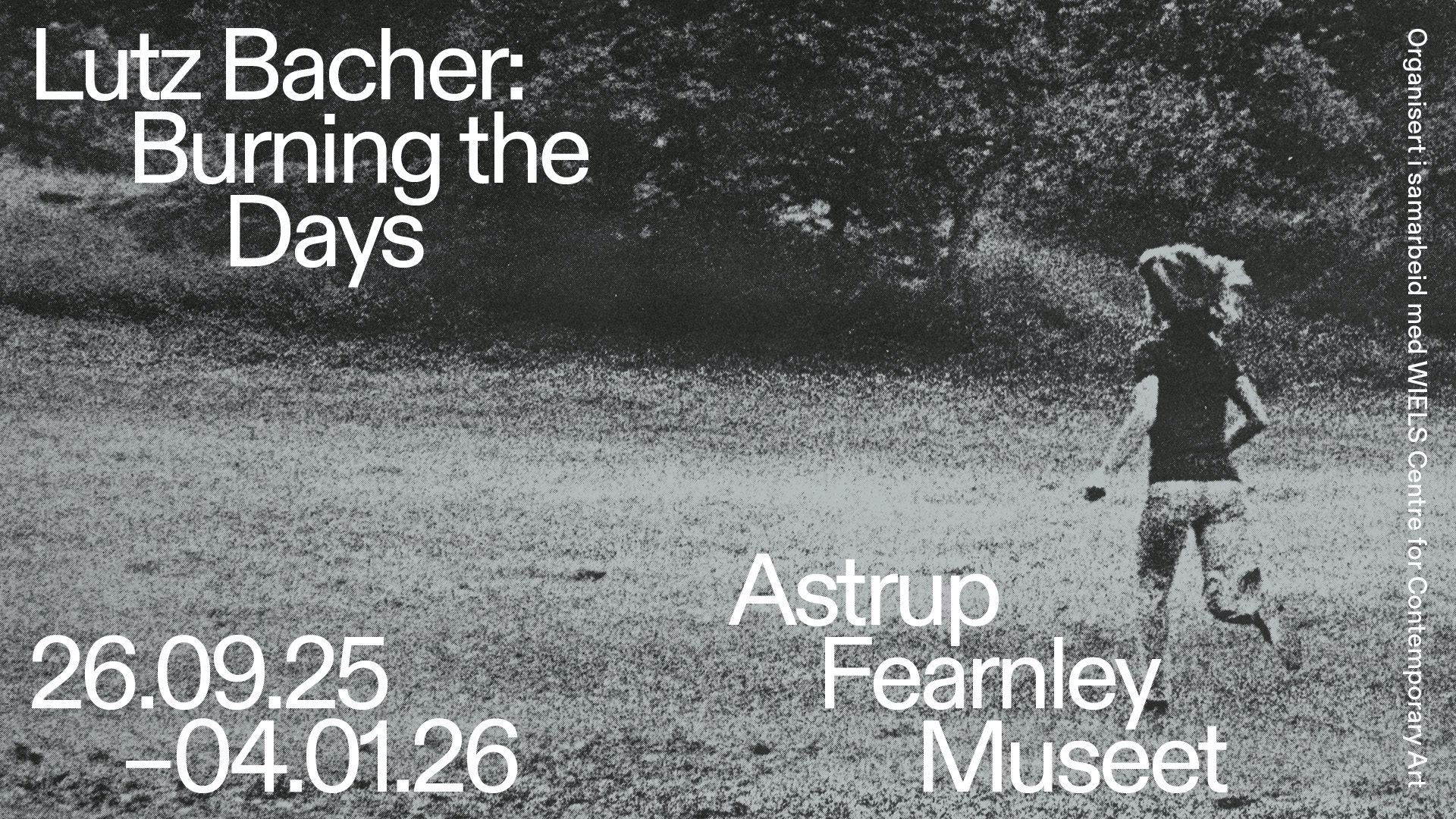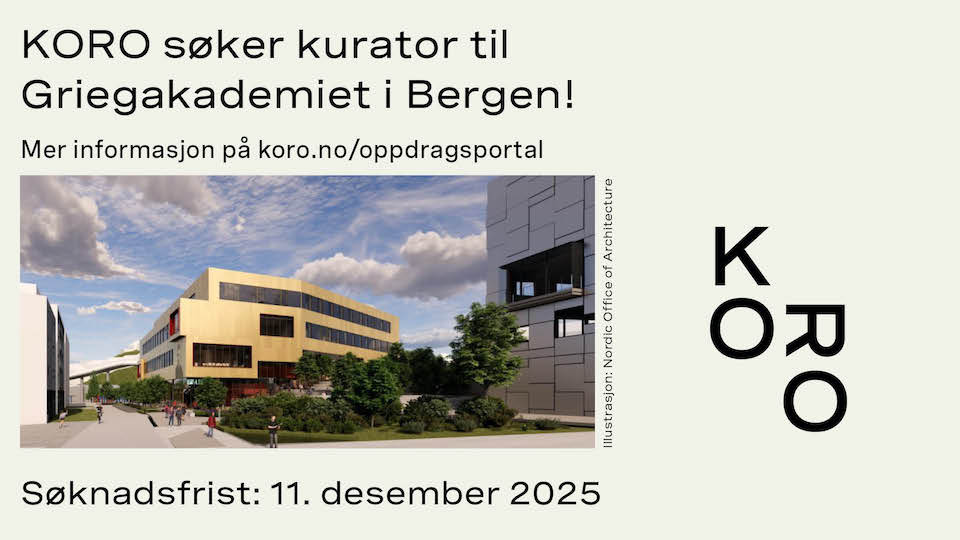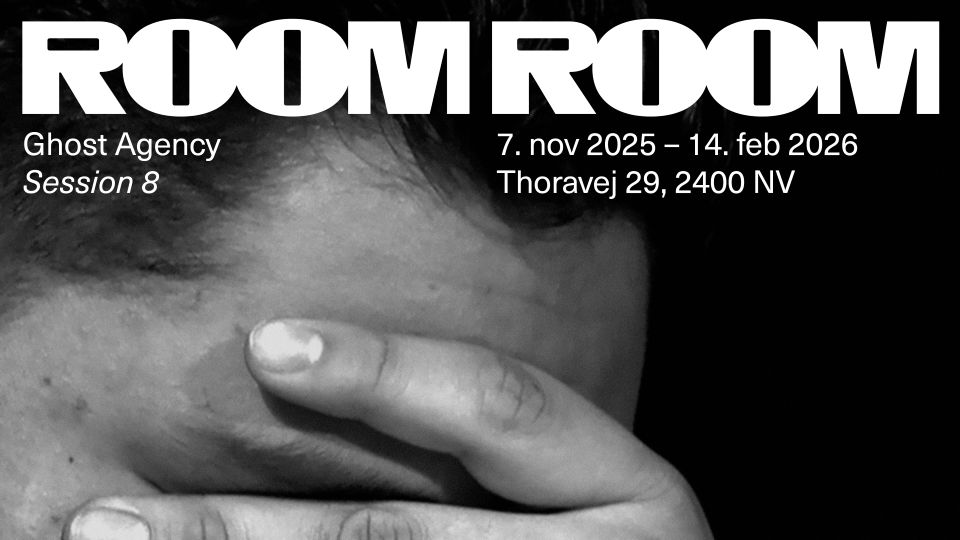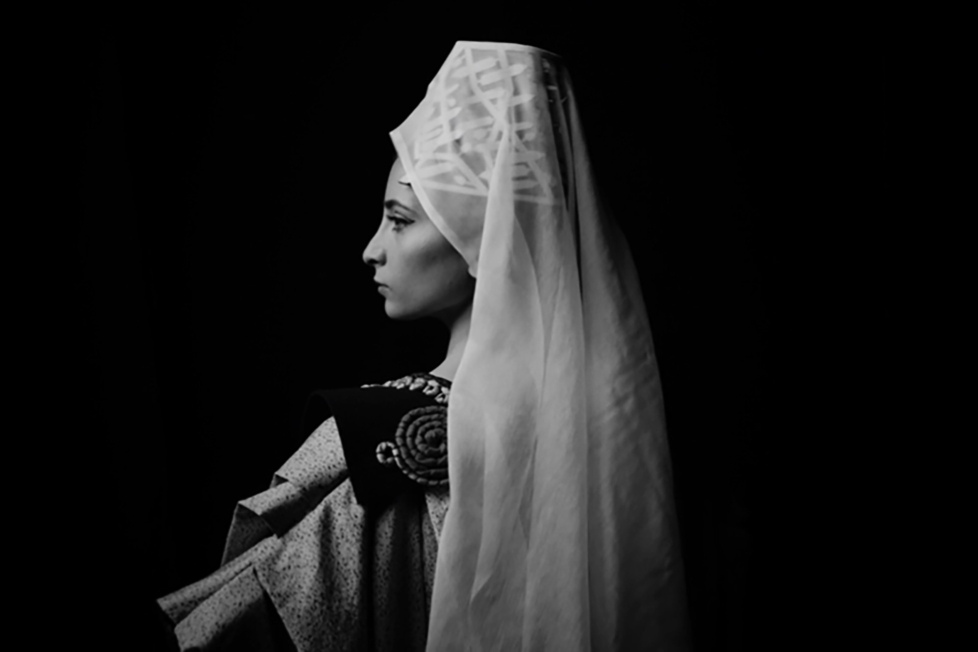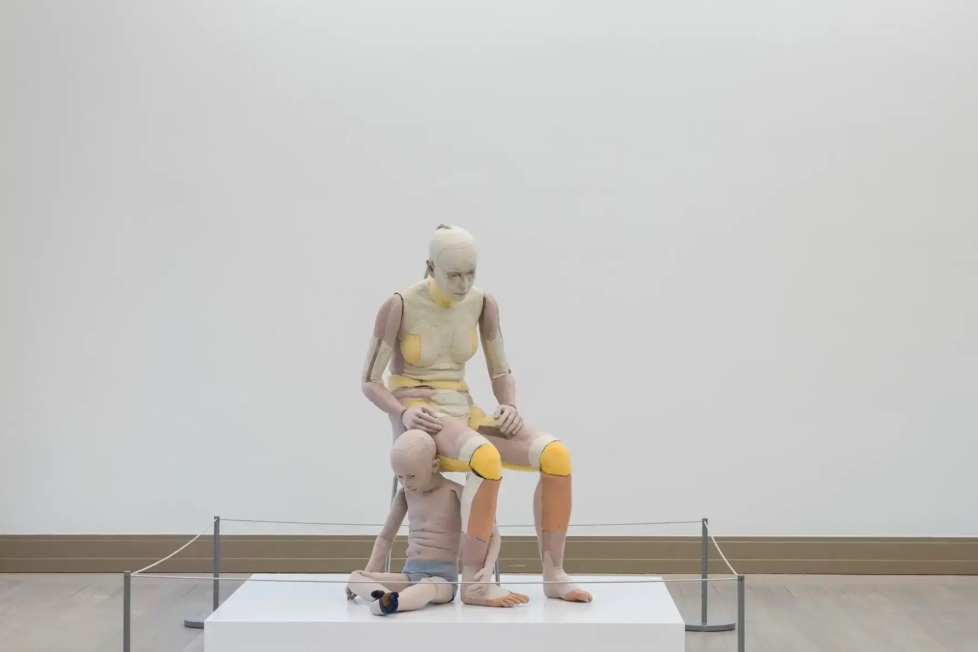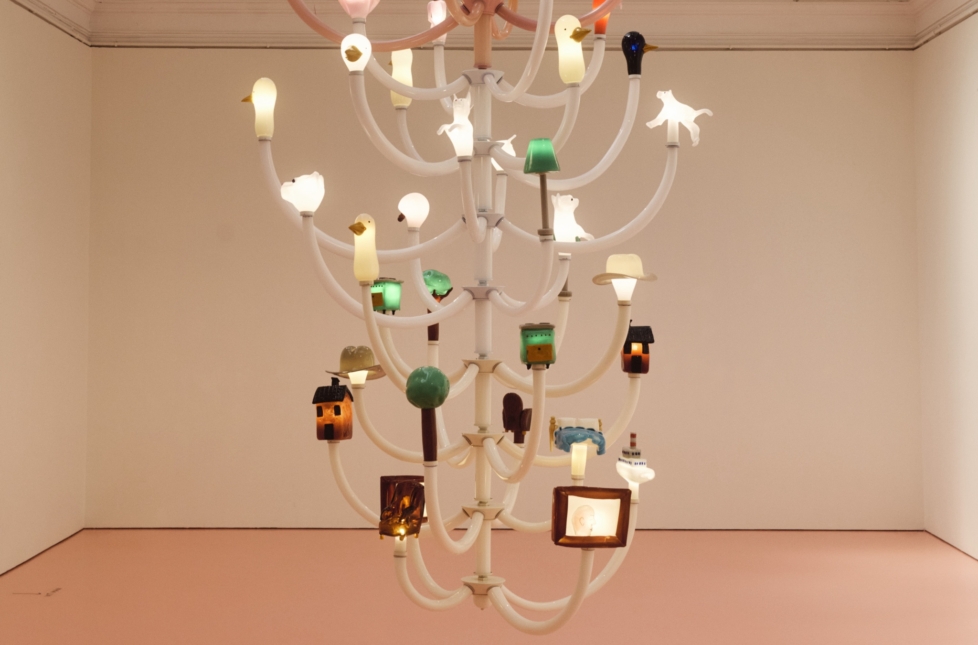
An old, worn pine door blocks the entrance to the main hall at Liljevalchs+. The key, with a crocheted tassel keyring, is in the lock. I turned it, but nothing happened. Opposite, an ordinary piassava broom with red bristles leans against the wall. Along the untreated wood handle the following words have been burned in: “om någon frågar om det var lätt ska jag ljuga och svara jaaa” (if anyone asks me if it was easy, I’ll lie and say yeees).
The ambiguous message belongs to the South Sámi artist Carola Grahn, whose solo exhibition Drick Drick (Drink, Drink) opens with this deconstructed outdoors. I pushed down the handle and walked through the door, only to enter another outdoor scene – as much nature porn as it is sublime – where a dim light shrouds a large, newly built porch. Small plastic snowflakes tumble down from the ceiling, dramatised by light from behind in the installation The Snow (2025.
Another lie, then. It wasn’t cold inside; there was no sky, and no ground. The roar of the snow machine was just one of many elements that places viewers in front of an image of snowfall, rather than in it. Somehow, the experience seemed more authentic, more true, than real snow.
Using a light touch, Grahn has channeled the West’s climate anxiety into a concrete question: do you want to experience snowfall in fifty years? The installation uses the post-minimalist strategies that have characterised Grahn’s large-scale works since her breakthrough at Röda Sten Konsthall in Gothenburg, in 2020, which centred the Sámi people as a consumer product: the artist herself as a souvenir printed on coffee cups, pints of ice cream, and white cotton garments. A few years later, at Wanås sculpture park, she set the inflatable plastic mountain Namahisvárri (2022) afloat in the pond behind the castle. Eco-criticism as a giant bouncy castle that could have been the remains of a failed Extinction Rebellion-action against wealthy landowners. Grahn is a clever humorist.
At Liljevalchs+, the mood is more subdued and melancholic. The humour has been toned down to let the works enter into dialogue with the bare concrete walls of Gert Wingårdh and Ingegärd Råman’s 2021 brutalist extension. The spacious upper level places higher demands on precision. As readymades, the piassava brooms of She calls me (2025) are exemplary, being practical objects whose primary use is to distinguish between cleanliness and dirtiness. These broomsticks, too, have been adorned with snippets of dialogue: “skatorna flyger ur hennes mun / det är satan och helvete som skjuter som pilar / det är de samiska hemligheterna som kokar upp ur jorden” (magpies fly out of her mouth / it’s Satan and hell shooting like arrows / it’s the Sámi secrets boiling up from the earth). The ending on the last broom reads ”hon har ett möte med en svensk” (she has a meeting with a Swede).

Grahn uses the individual event to activate a larger narrative about Nordic colonialism and oppression. This takes the form of pairs of opposites that are expected to collide and create a third, indefinable something: natural and artificial, centre and periphery, Sámi and Swedish, woman and man. But when Grahn had used text, she beacaome too obvious and unedited. The lyrical rawness isabsorbed into the anonymity of the object and dilutes the pain.
However, the examination of masculinity and femininity is more sophisticated. In the works from the Dragon Series (2025), Grahn has combined reindeer skins and green dishcloths using artificial sinew thread. These abstract works weave the connotations of the materials – reindeer herding, cleaning domestic surfaces, building instruments – and their supposed gendered nature into a purely visual experience. In Swedish, the words for reindeer and clean are the same: “ren.”

In three smaller works in reindeer skin, Grahn uses pink dishcloths and sponges to mark the contours of a woman’s body: breasts, bum, bush. It’s not banal, it’s funny! Nearby, seventeen knives stand phallically at attention on a long dining table. In Luhkietjijhtje nejpieh (Seventeen knives, 2025), a group of Sámi craftsmen (sixteen men and one woman) have been commissioned to engrave knife handles according to Sámi traditions. In addition to archiving the craft, the work’s masculine design plays off the ultra-feminine contours of the reindeer skins. Grahn’s feminist analysis is not clear-cut – does it matter that men pass on certain Sámi craft traditions and women others? Unlike some prominent Sámi artists, Grahn is less of an activist, cultivating a critical ambivalence in relation to Sámi (and female) identity that makes her harder to pin down.
The phenomenal fountain sculpture Drick Drick (2025) in the top hall attests to this. On a stack of three stainless steel cubes, water flows endlessly from a kitchen tap into a flooded water glass. Here, the solid water molecules of the opening installation The Snow are transformed into liquid. The room is filled with a rippling sound. The mountain river, a cliché? But also: movement, life, change. Grahn has a pitch-perfect understanding of how wit can expand the existential depth of art. Will the floods destroy us? Or will the memory of the snowfall finally wake us up and make us actually change the way we live?

